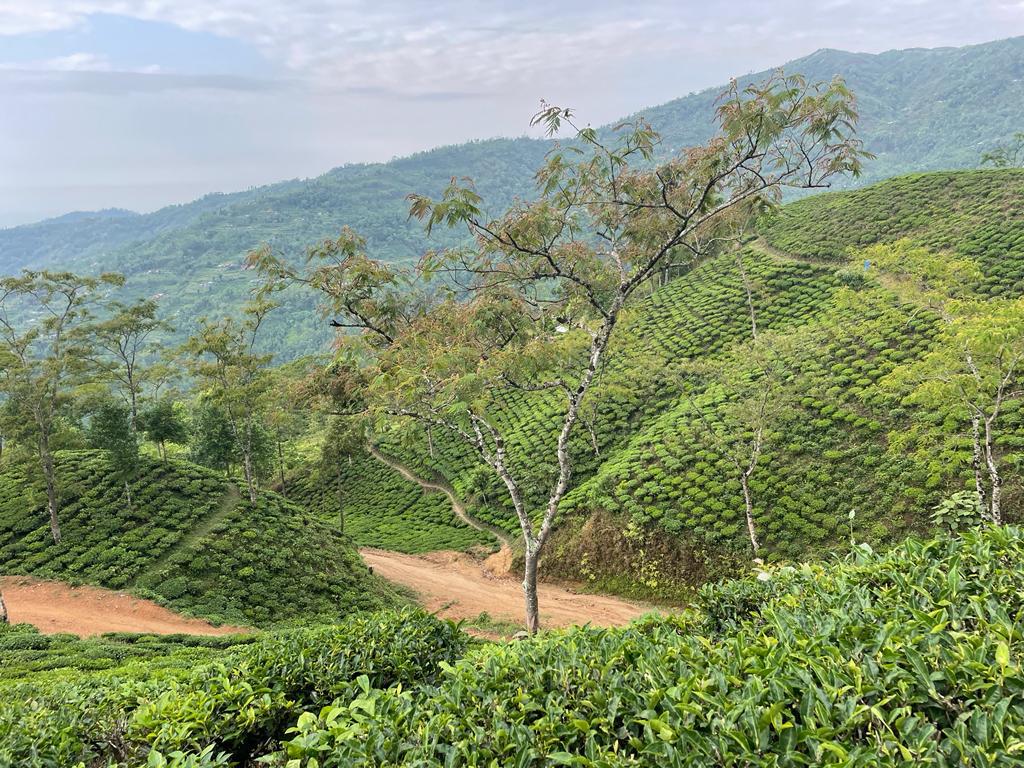
Nepal’s eastern tea-growing region leads the country’s tea trade, but the landscape is now changing as rural entrepreneurs expand the tea terroir. Upcoming tea brands are establishing Nepal Tea as a global brand offering premium differentiated products with a compelling story that is authentic and modern.
“As I speak to you, I am looking at a farmer. He has about half an acre of land, five goats, one cow, and a small farm. Tea is one income source for him, along with other crops like corn. Tea is a new addition to rice, maize, and bamboo,” says Narendra Gurung, who runs the Barbote Tea Garden in Ilam.
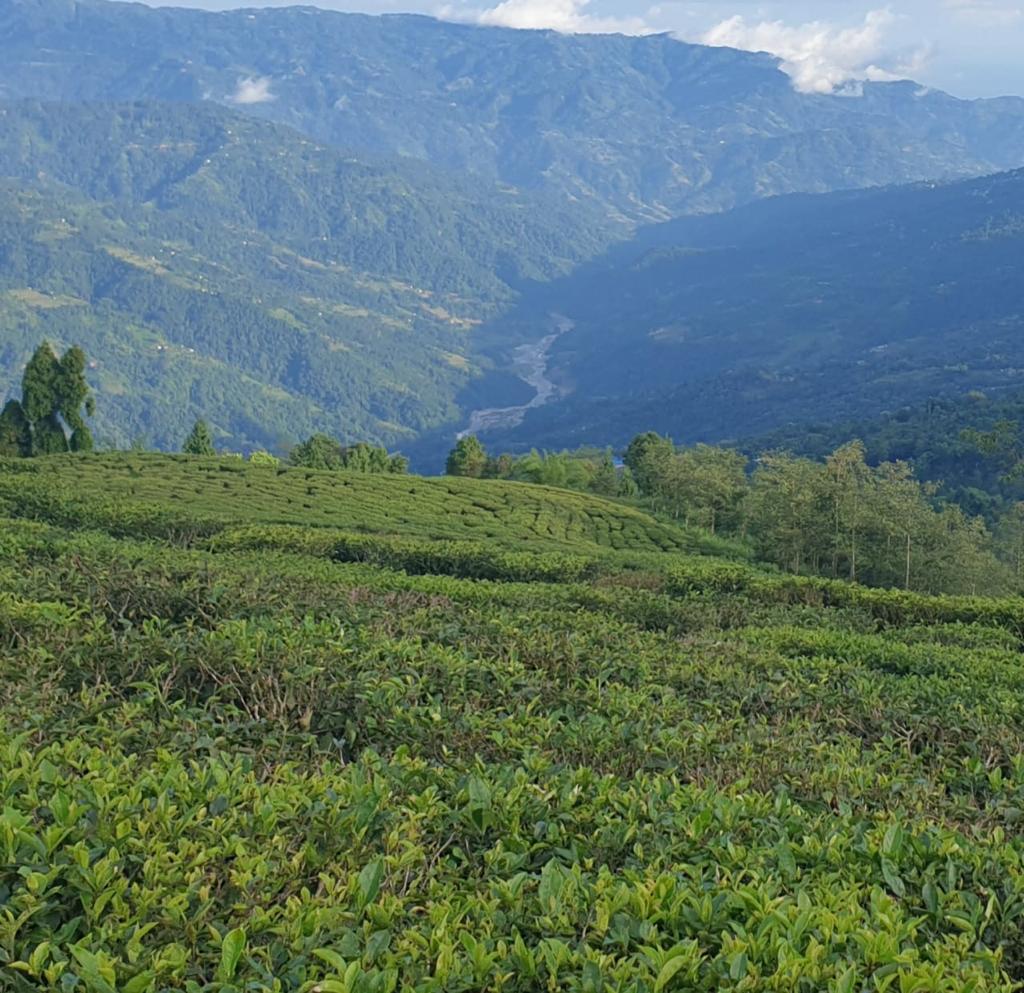
Ilam is one of 14 districts that make up Province 1 in eastern Nepal. It’s famous for having led the tea industry in Nepal. It’s a hilly region with elevations going up to 3600 m above sea level. Tea planting began in 1863 in these parts, but it took the introduction of the Small Farmers Scheme in 1978 to open the orthodox tea market. With the scheme, many small farmers started tea cultivation in Ilam. The rollercoaster ride hit a low when production increased and prices dropped, leaving several farmers disillusioned.
Specialty tea became the changemaker in the last 7-8 years. It brought quality into focus, and some farmers found a willing market for these teas outside the country. Innovation in tea making and attention to quality has entered the vocabulary, as have organic farming practices. There are more entrepreneurs in the tea trade today than there have been, keen to brand, market, and take Nepal tea to the world as a truly great tea.
Nepal continues with a model of small farmer holdings (presently, 90% of tea is cultivated by them), grouped as cooperatives with a few factories. The collective production is about 8mn kilos of orthodox and specialty tea produced annually. India has been the primary market, but today there is a growing interest in Nepal’s tea from the US, UK, Europe, and within the country.
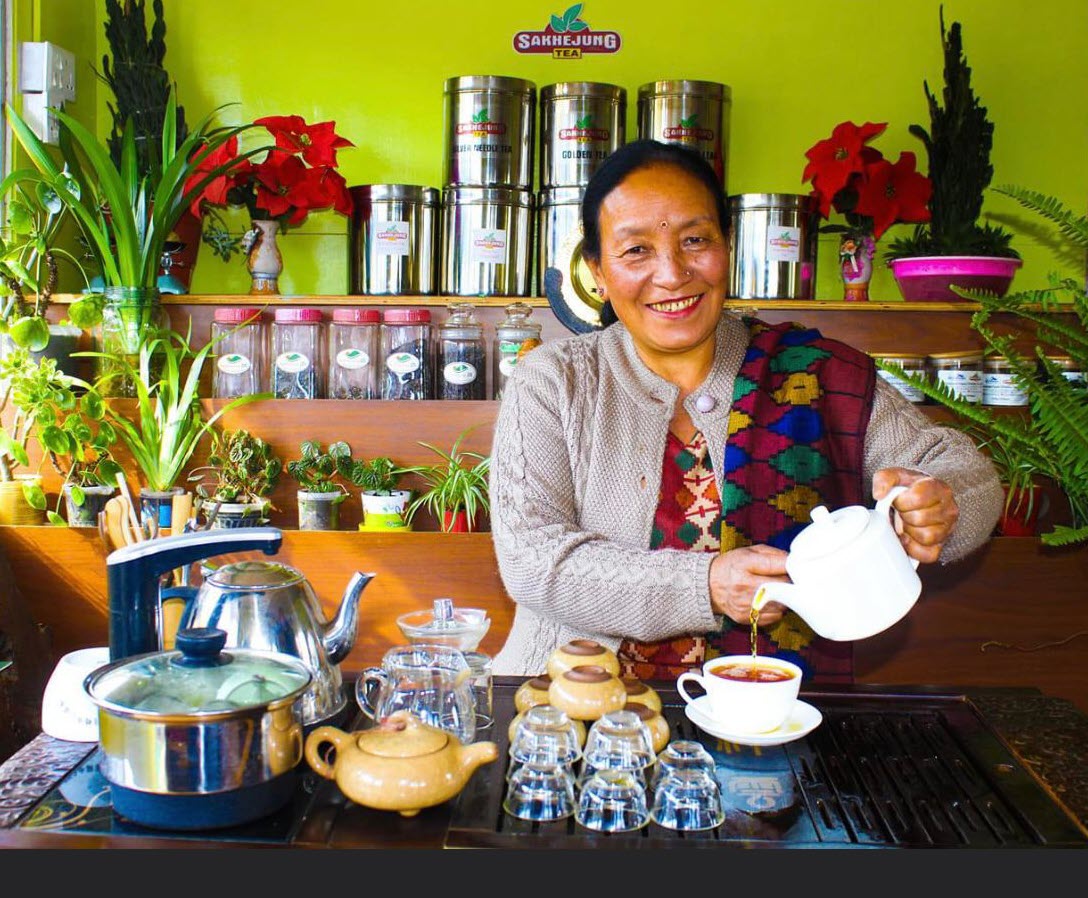
The story of the small farmer
Sakhejung offers stunning landscapes and views. Its hills are lush with tea, and the cold air is energizing. In Sakhejung, Yogesh Khatri tells the story of how the brand came to be. “In early 2000, there were few factories here. Many planted tea as a cash crop, and the price was good. Farmers were excited as they felt this was a good way to earn money.” The crash came when production went up, and prices dropped. Many farmers chose to uproot the tea bushes and plant other crops.
Yogesh’s mother, Milan Kumari Khatri, who had a small tea farm, decided to process the tea leaves herself, choosing natural withering and hand rolling techniques. Supported by her husband, Dambar Bahadur, who was a schoolteacher, the couple began to make small volumes of hand-rolled tea in their kitchen. The nearby Mechi Highway offered them access to a market. They soon began to sell the tea at the Ilam Bazaar. It was different from the more ubiquitous CTC tea consumers had access to; it was more flavourful. The tea eventually reached Kathmandu and garnered a buyer in Russia. Until then, the processing was done at home, with their kitchen oven. Slowly, the farm added small machinery to set up a processing unit.
In 2008, Milan registered her company Kanchanjangha Organic Handmade Tea. Not long after, they began procuring tea leaves from the Srijansil Cooperative, paying higher than the average price for the green leaves. The family decided to brand their range as Sakhejung Tea.
The story of Sakhejung is complete because of what they represent today, an organic tea brand from Nepal producing high elevation specialty teas including white tea, silver needle, and golden tips in addition to the orthodox black tea and green tea. Today, the company produces 20 tonnes per annum, working with 84 smallholder farmers who farm nearly 41 hectares. The farms are certified organic, and the Khatris take responsibility for training the farmers in organic farming to ensure that the tea meets the requirements and the cost of certification.
While India remains a primary market for green tea, Sakhejung is looking at a global market, inviting buyers and tea lovers to try their teas. Sakhejung’s access to a market has been via trade fairs, the website, and social media, but as Yogesh says, more work needs to be done in acquiring a market.
Also in Ilam, Man Kumar Mukhiya inherited 1.5 hectares of tea that his grandfather had begun cultivating. In 2012, Mukhiya decided to start producing tea. Located at Mai Pokhari, famous as a pilgrimage center, and at a high elevation, Mukhiya today has a factory that can produce 30,000 kilos annually. However, quality has been a prime driver and Mukhiya’s brand, named for the region – Mai Pokhari – produces about 20,000 kilos a year, with nearly 45 farmers supplying green leaves.
Teas for many markets
The competition has increased in the last ten years as more factories have mushroomed. The potential to acquire new markets has also meant that factories are each vying for a share, making teas that will find ready takers: green tea for India, certified organic teas for Europe, the UK, and the USA, and black tea for China. The revival of the tea industry can be attributed to the beginnings of the specialty tea market.
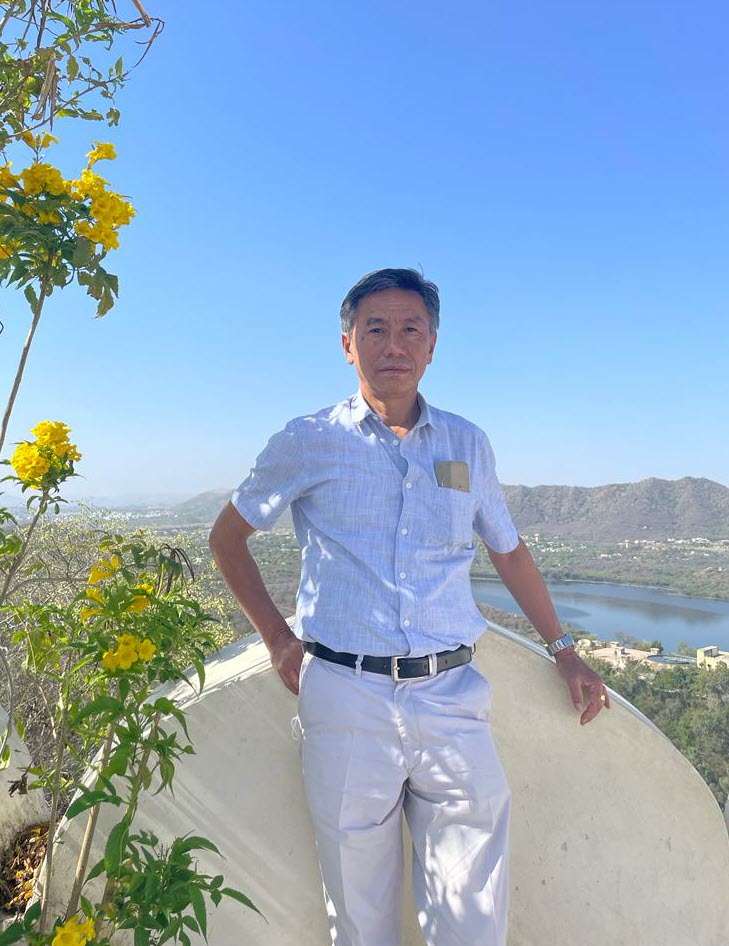
When farmers were disappointed and disheartened by how the tea industry was progressing, specialty tea offered a possible way out.
Suresh Limbu started tea planting on 10.5 hectares in the Ilam area back in 1988. Initially, he made a handmade black tea sold to the domestic market in Kathmandu. Small volumes of this tea made their way to Japan, but he didn’t actively pursue the market. In 1997, harvest increased, leading Limbu to move from handmade to processed tea. The nearest factory was 80 kilometers away, but it took anywhere between 6-10 hours for the leaves to reach the factory by road. In 2004, Limbu started the Mist Valley tea factory. In the first year, they produced 29,000 kilos; over the years, production increased, reaching 103,000 kilos in 2015. India remains the top market, Germany, France, and Lithuania in Europe, the US, and Asia, where sales to Japan, Cambodia, China, and Taiwan are growing.
Mist Valley’s gardens are pristine and clean, revealing what Nepal’s tea could stand for. The factory is rated one of the best in the country is ISO 22000-2018 standards. Or, as Limbu describes it, “Nepal teas have rich, flowery, fruity, and vibrant character echoing the freshness of the Himalayas. And Mist Valley teas reflect the best of Nepal with consistency and high-quality teas.”
Another factory is Green Valley Tea, with its brand, Simpani Tea. The factory was started in 2019, although the owners have farmed on 30 hectares since 1999. Green Valley Tea is also located in Sakhejung and produced orthodox black tea before moving to specialty tea production. Like the others, their markets include Nepal, Germany, and the Netherlands to a small extent. Green Valley represents the ambition of new entrepreneurs who see how a processing facility can allow them to decide the teas they can produce and, therefore, the prices they can hope to earn. Farmers realize that processing the leaves offers them more control of the tea they can produce, and therefore the prices they can earn.
Specialty tea agrees Rabin Rai, General Secretary of the Central Tea Cooperative Federation (CTCF), has changed the landscape. Where once only orthodox black and green tea were exported, the addition of new tea types has allowed the farmers to explore new markets. In Mai Pokhari, Mukhiya makes oolong. His ‘red panda oolong’ and ‘amber oolong’ are our signature teas. A tea that several producers mention is the Golden Tea, made from one leaf and bud and highly sought after in the Chinese market; it could well become Nepal’s signature tea export.
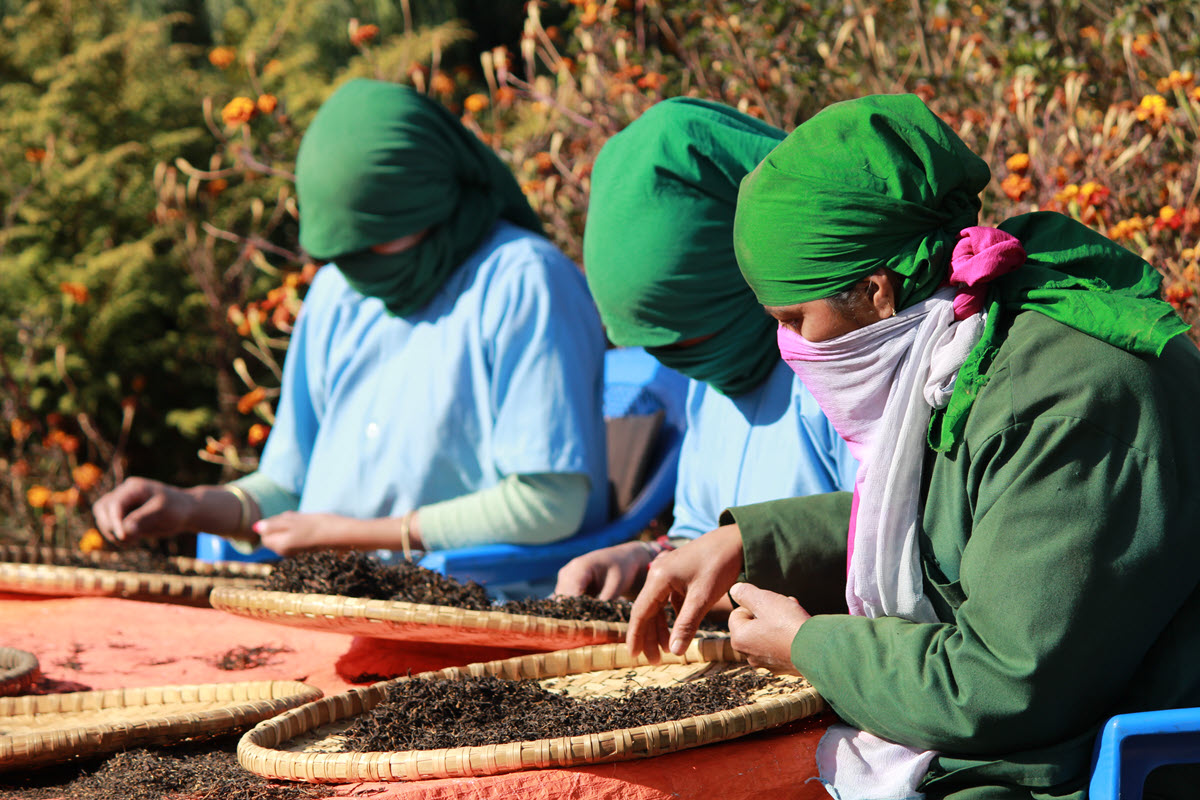
Social impact
Mist Valley employs 60 people from the nearby village and supports nearly 500 via its extended network of tea farmers in the region. Tea has brought a positive community impact as a reliable source of income both directly and indirectly.
Kalapani is a recent addition to the growing band of factories. Named for the location, a historical site situated at an altitude of 2030 m, Kalapani is in Yangwarak rural municipality, Panchthar district. It’s a popular spot among tourists, thanks to magnificent views of the snowy peaks of the Kanchenjunga and the Kumbhakarna, which are part of the eastern Himalayas. Prakash Raya of Kalapani says, “Farmers here are excited about cultivating tea and hope it will compensate well.” He set up the factory to encourage farmers and offer them a way out. It’s still early days – having been set up in 2020 – but the focus is already on supporting the 50 families in the community by creating job opportunities, providing tea education, increasing earnings, and sharing local tradition and culture with the world via the tea.
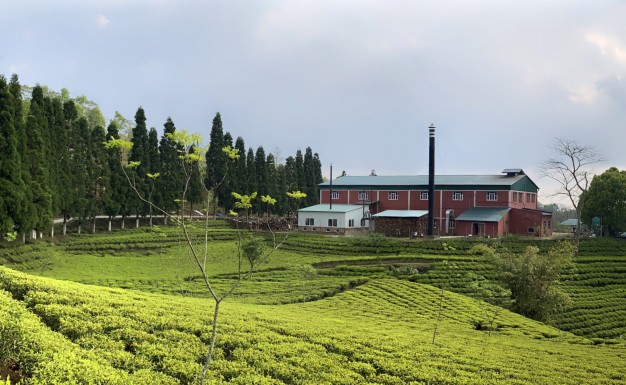
Rabin Rai points to the grassroots level where the impact is most needed and felt. “We have 101 cooperatives and 31 processing factories. Of these, seven factories can produce specialty tea.” The bushes are young, he adds, and productivity is high. And choosing specialty tea means farmers can earn a higher price. While multi-cropping is practiced along with cattle rearing, tea brings more than 60% of the farmer’s income, making it crucial.
The CTCA is a marketing platform connecting members to buyers and shipping samples. They are also keenly working on quality by bringing technicians and experts to support farmers and producers. Knowledge sharing is a vital part of their work. He also points out that the unique feature of Nepal’s tea production also brings the challenge of small volumes. Added to this is the need for certifications for an export market which is expensive. Nepal’s tea farms are in rural areas, not connected by road, with everything from infrastructure to internet connectivity to language posing a barrier. The CTCA is an intermediary representing Nepal’s tea producers to the world.
Emerging into its own
Nepal Tea Brands
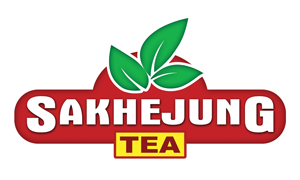
Sakhejung– a brand started in the Sakhejung district. Their primary market is India for their green tea, but they also produce golden tips that are popular in China.
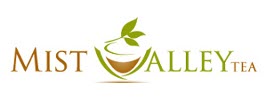
Mist Valley Tea – a high elevation garden in Ilam, owned by Suresh Limbu, who specializes in high-grade orthodox black tea

Mai Pokhari – run by Man Kumar Mukhiya, also keenly pursuing specialty tea production and putting Nepal on the specialty tea map, with his signature oolong teas.

Simpani Tea – One of the newer brands established in 2019 as an organic tea processing factory, located in Sakhejung in Ilam.
Nepal tea’s challenges have been aggressively marketing itself as a brand. Tea is establishing a new legacy, and as much as it’s about branding, the expected outcome is that farmers will have livelihood opportunities from tea. All the producers speak of the need to become bigger and better. Nepal needs new tea markets beyond India. Germany is currently the second-biggest buyer of Nepal tea. And producers are also waking up to the opportunity to develop a domestic market.
Narendra Gurung points to the two levels of employment that specialty tea offers. The first is when they pluck leaves and buds and are paid at the end of the day, and the second is when they segregate these for buds alone. Entire families gather in the living room, segregating the leaves for buds. The buds sell for a premium, but Gurung sees it as a way for families to come together. Income generation and social activity. One kilo of needles fetches Nepali Rupees 500, which is very attractive.
“How can we link quality of life for the people who are farming here with those who are sipping the same teas in Europe or America?” he asks. “How can we qualify the value of this tea? In the tea map of the world, we are not even a dot yet, but we are slowly coming up,” he adds, echoing the belief of the other producers. And specialty tea is seen by all as the path to this development. Gurung speaks of agro-tourism where buyers visit Nepal, spend time with farmers, and build relationships before they take the tea to the world. “Can they come to see the pains and pleasure of our specialty tea producers,” he asks, offering a glimpse of what is on offer: Buyers will find natural beauty, stunning landscapes, and warm and hospitable people. There will always be a smile, a greeting, and a cup of tea.
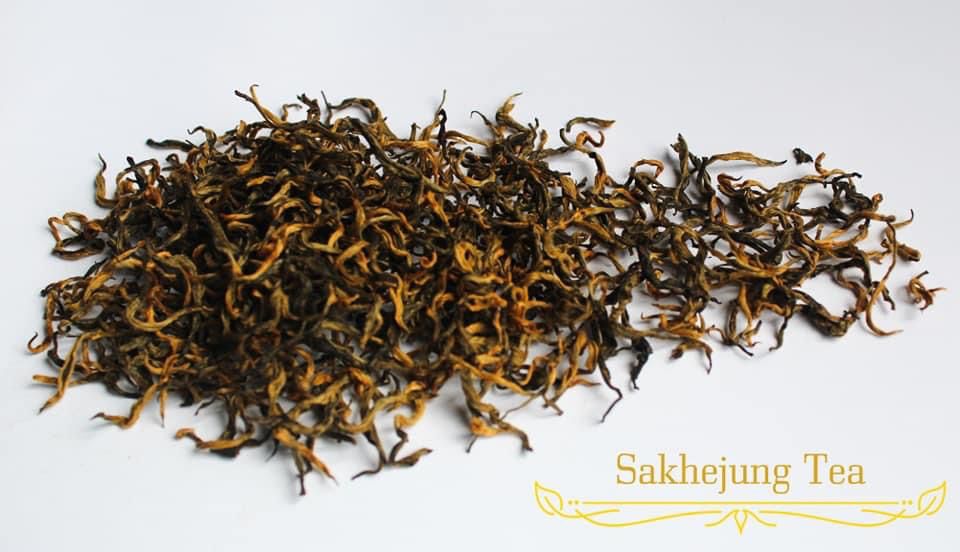
The work ahead to showcase Nepal’s natural beauty, the lives of the farmers, and the craft of tea making could become the heart of Nepal tea’s story, one that is entirely its own and not related to neighboring Darjeeling. Comparisons continue to be there, but Gurung says, “From my aunt’s house if I stretch my arms, I am in India and my cousin’s house on one side is Indian the other side Nepali. The political border is funny. We are not a contender to Darjeeling tea. If we can stand as Nepali tea, we don’t need to piggyback on Darjeeling.”